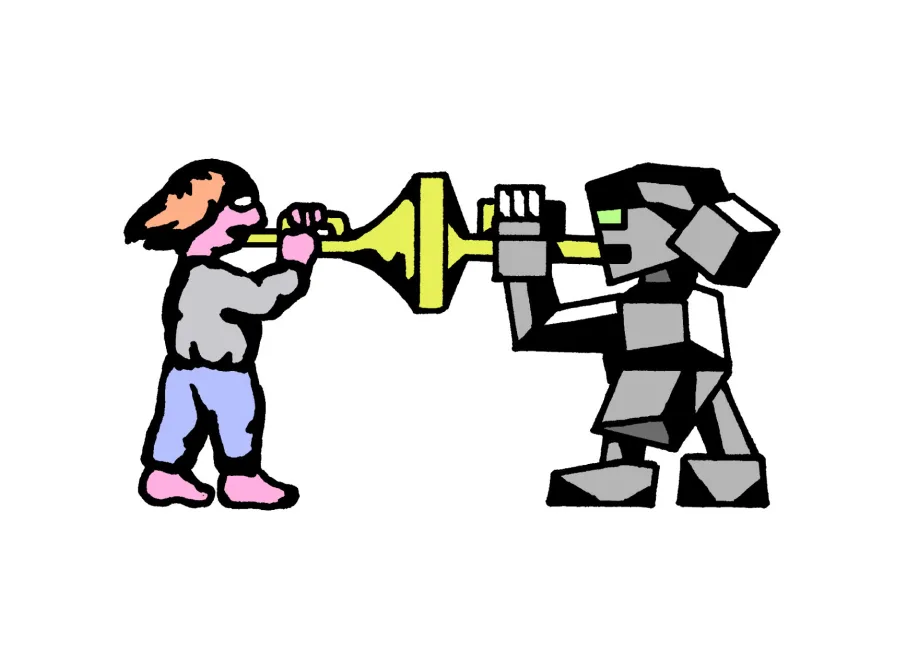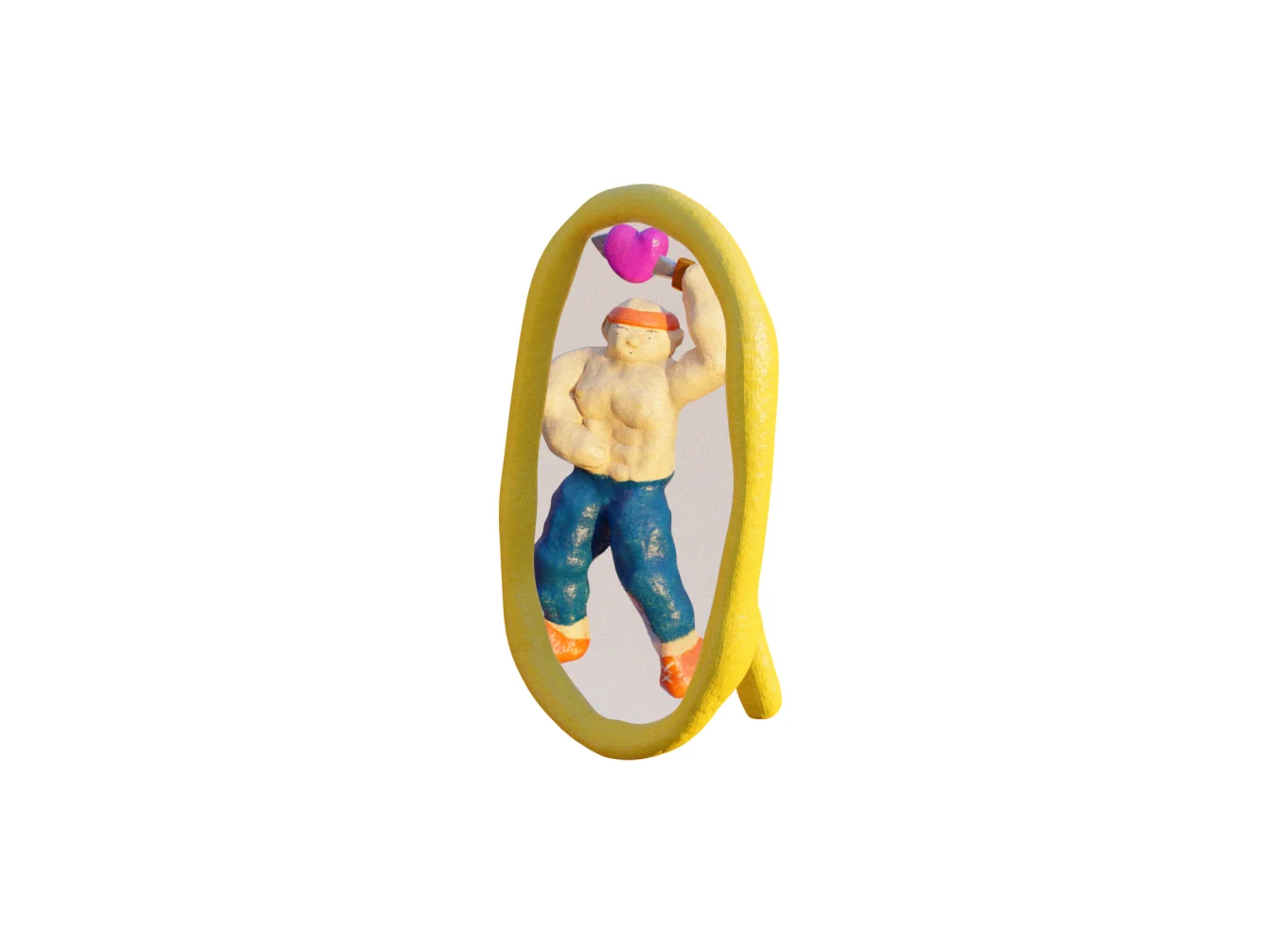

There are lots of things for creatives to think about beyond having good ideas. We’re here to help, with our advice series Stuff They Don’t Tell You. Here, James Cartwright looks at how we should feel about client feedback.
Illustrations by Antoine Cossé.
Billionaire business tycoon Warren Buffet thinks we should all welcome feedback. Or, as he puts it, “Honesty is a very expensive gift; just don't expect it from cheap people.” While it’s not exactly clear what he means by “cheap people,” the rest of his message is clear; if someone offers you feedback accept it graciously, no matter how uncomfortable the process.
Most freelance creatives have few things in common with Warren Buffet, but his approach to feedback really ought to be one of them. When you’re working for clients, learning to deal with their responses to your work is one of the greatest challenges you face. It’s an integral part of ensuring you continue to get work.
For many young creatives though, it can be tough to adjust to the way feedback works. “When I hit the real world it was a shock to my system as the cordial conversations were replaced with blunt, time-efficient emails,” says artist, illustrator and animator Kate Scott. “Everyone seemed so unfriendly compared to my relaxed peers at university. I found it pretty taxing.”

Mastering the humble receipt of feedback takes time and effort, not to mention a thick skin and the ability to keep calm under a barrage of criticism. But once you’ve got the hang of it, much of the stress of client relationships melts away and you can concentrate on the task at hand – making exceptional creative work.
“I had a hard time understanding this balance in the past,” admits Eric Hu, global design director at Nike Sportswear who also works on freelance projects. “I challenged clients in ways that were unproductive and I lost a few because I was too difficult to deal with. I had to change my ways. Looking back, nothing I said was bad, but I didn't present myself as a good listener.”
For some, the subtle art of feedback is best learned by watching more experienced people up close and personal. Designer and art director Tala Safié, worked for one of her former tutors straight out of college, and learned not only how to receive feedback, but how to give it too.
“I learned a lot from him,” she says. ”He was patient, respectful, flexible, and chose his words very carefully. He was also a good listener and would let the client do most of the talking.”
If you’re not as fortunate as Tala to have an inspirational boss straight out of art school, then you’ll most likely have to learn these skills on the job. And while it might seem very intimidating at first, it’s a process we all have to go through. Here’s a few tips to make that transition easier…

Establish how much creative control you have
If you’re cagey and unresponsive to feedback, things can get really awkward really quickly.
Different projects come with different levels of creative control. Some clients will allow you to run wild with an unusual concept, while others may have specific ideas and a set vision for the outcome. One way isn’t necessarily better than the other.
“I don’t always like creative control and it’s nice to work with restrictions,” says Eric. “I don’t really find it difficult unless the parameters change half-way through. If I go into a project knowing I don’t have much control, that’s fine. A lot of times it’s actually fun for me. But what’s agonizing is if, halfway through, the client suddenly wants me to go wild with it. The reverse is also true. If a project started off really free and suddenly became prescriptive, that would throw me off. It’s all about managing expectations.”
Make your own communication clear
Establishing open and honest communication with your client is the best way to make sure they offer you the same courtesy. If you’re cagey and unresponsive to feedback, things can get really awkward really quickly. Some client relationships will inevitably be more difficult than others, but finding ways to overcome those difficulties will often be your responsibility.
“When I disagree with a client’s feedback, I usually try to offer visual alternatives before articulating my disagreement,” Tala says. “I try to visually explain why something wouldn’t necessarily work instead of writing a negative email. Clients usually appreciate that effort – it builds trust.”

Work out what medium works best for you
Some people are comfortable on the phone, others prefer email. But if you find the medium affects how well you communicate, then it’s better to pick a preference and make that clear to the client up front.
“Understanding feedback was a big learning curve for me,” says Kate. “I am so dyslexic and often find it hard to understand the tone, so deconstructing what the client wants can sometimes go off course. Ideally now I like a phone call to run through feedback and changes, then a bullet point email to back it up so it’s all on paper.”
Define your process
You may feel like a prima-donna, but if it works for you then it will likely be better for your collaboration.
“I like to present work in person, or at least be able to talk through it over the phone,” says Eric. “I want to get people’s first reactions and get a good conversation going, and I try to keep that as organic and rules-free as possible. Usually I give clients 72 hours to put official feedback in writing so that everyone’s on the same page before I begin implementing anything.
“In writing, I take feedback from one person. It’s fine if they consolidate feedback from people in their team, but I won’t do that whole reply-all discussion thing. I can’t work with noise. That’s my thing.”
You may feel like a prima-donna outlining your feedback process to a new client, but if it works for you then it will likely be better for your collaboration.

Pick your battles
Even if you don't agree, it’s important to understand the different points of views and find a middle ground.
Sometimes you’re going to disagree with a client but still have to make changes to your work that you really don’t want to make. That’s part of the process. “I just started a new job at The New York Times as an art director,” says Tala, “where I constantly receive feedback from editors, photo editors, design directors, and paginators. Although I don’t necessarily agree with every bit of feedback, it’s important to understand the different points of views and find a middle ground.”
That doesn’t mean you have to be a pushover though. “There is only so much that I am prepared to edit and change before I push back,” says Kate. “I love a good discussion and think it’s important to really explore the brief. If a client is hiring you as a creative then they want your creative opinion as well. I don’t want to play it too safe, because if you’re bored making the work then the end result is usually boring.”

Remember, you’ve probably survived worse
“The harshest critiques I’ve ever had took place in school,” says Eric. “Everything feels more mellow in comparison. As an art student, you have to present your work to your instructors and peers week after week. In other majors, grades are kept private, feedback is more likely given one on one, but that’s not the case as an art student. You have to have a higher threshold for criticism to get the most out of it.”
If you’ve already survived such a cutthroat environment, dealing with clients will be a walk in the park.
Give as you’d like to receive
At some point you’re going to be on the other side of the feedback fence (it’s a fence, sure) and dishing it out yourself. When this happens, remember the humility you hoped for from your own clients.
“Criticism, like rain, should be gentle enough to nourish a man's growth without destroying his roots.” So said American politician Frank Clark and it’s a sentiment that is widely recognized.
“The best way to give feedback is to be brutally honest with someone but make the extra effort to let them know that you appreciate and care about them,” Eric says. “It doesn’t cost me anything to say – hey, I know you’ve been working hard on this – or – here’s what I love about this – before going into what you don’t love about their work. It shouldn’t hurt you to see the other person as a human being.”
Tala agrees. “Communication and humility are key.”
















